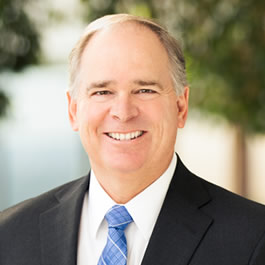AEP moves forward with transmission, distribution investments to improve grid reliability

The financial world has been improving for American Electric Power (AEP) since it began turning away from the plentiful coal assets in its territory, and the company is all in with continuing its increased reliance on renewables and improved transmission capabilities.
The head of AEP, Nicholas K. Akins, told analysts at the Edison Electric Institute’s (EEI) 2019 Financial Conference in Orlando on Tuesday that his company was pointing the bulk of capital investment toward renewable power and improving the performance of its transmission grid, and then passing the savings on to its customers.
“When you think about the magnitude of the investments being made, there is no question that the investments at the transmission and distribution level will be beneficial not only in terms of the resiliency and reliability of the grid, but to the quality of the service that we provide to our customers as well,” said Akins, who holds the titles of chairman, president, and CEO of AEP.
Akins has been at the helm of AEP for 10 years and oversaw the divestment of its non-regulated merchant plants in the Ohio area. He portrayed the move as a key step in freeing AEP to become nimbler and more profitable. His appearance at EEI came a few days after AEP reported third-quarter earnings of $734 million, or $1.49 per share, compared with earnings of $578 million or $1.17 per share in Q3 2018.
Akins noted that eight years ago, AEP had around 40,000 megawatts (MW) of generation capacity and a market capitalization of $17 billion. Generation today is pegged at only 26,000 MW and a market cap that has jumped to $46 billion. He said AEP’s performance demonstrated the company was “focusing on the right type of investments.”
“It breeds confidence in our steady and predictable earnings profile,” Akins said.
By selling or retiring a sizable chunk of its coal generation, AEP freed itself from a significant financial burden while at the same time striving for a smaller carbon footprint in the coming decades, Akins said. While coal may be plentiful and relatively economical, AEP’s merchant plants were also saddled with an uncertain market and fixed operations and maintenance (O&M) costs. “The generation side is the most risky investment you can make,” he said.
AEP has since shifted strategy to ramping-up its renewable resources. The company sees energy storage playing a more prominent role in the future, and the company is clearing the final regulatory steps for the North Central Wind Project, a $2 billion trio of Oklahoma wind farms that will supply some 1,485 MW of green power to Texas, Louisiana, Arkansas and Oklahoma beginning in 2022.
“The majority of our investments are solar and wind with some natural gas to back it up, and that is the positive aspect of rebalancing the portfolio,” Akins said. “These resources are less risky not just for us to construct and own, but also for our customers and shareholders. We don’t have a large, bulky central generation station that would take years to build and has a lot of risk and O&M associated with it.”
Moreover, a key to North Central is that it does not include the need to build a new and expensive transmission line to move power; the project uses existing wires to move power to its customers and greatly reduces the risk to its stakeholders. That doesn’t mean, however, that AEP is not overall bullish about the benefits of transmission as a revenue stream. AEP announced this month that it would be earmarking $25.7 billion of a $33 billion capital package in upgrading its transmission-and-distribution infrastructure over the next four years. By comparison, $2.3 billion will be spent on renewable generation.
Akin told the EEI audience that making sure the grid was as efficient as possible would keep rate increases to a minimum. It would also enable AEP customers to better manage their power consumption and, as a result, keep a lid on their electric bills. “The investments being made at the transmission and distribution level will be beneficial not only in terms of the resiliency and reliability of the grid but to the quality of the service that we provide to our customers as well,” he said.
“There is no question,” Akins said, “that the reliability of the grid will continue to be a theme … not only for AEP but for the entire country.”
